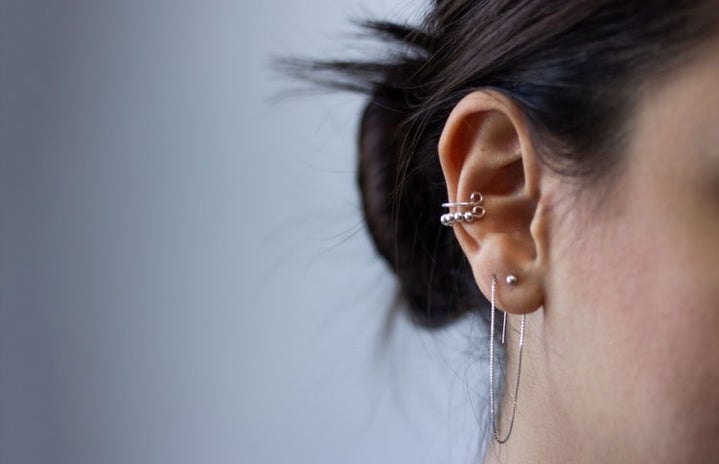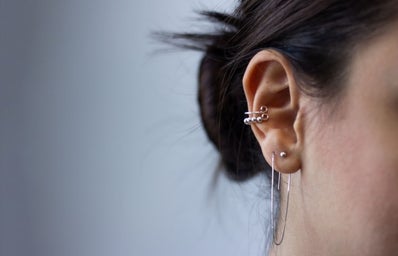College is the time to find oneself and express yourself through different creative outlets. A lot of people will make slight changes to their appearance that reflect their personality. One of these changes can be piercings. While piercings are a fun way to add to your appearance, it’s important that they are done safely and you are well informed beforehand. Think of this as a beginner’s guide to getting a piercing.
Find a Reliable Shop
It’s important to find a reliable shop and a good piercer to make sure your piercing is clean and safe. One way to find a good shop is by word of mouth, and by asking friends who already have piercings where they got theirs done and how their experience was. If you don’t know people with piercings, going on websites like Yelp and looking at reviews of shops will also give a good estimate of what places are trustworthy. While it’s tempting to choose the cheapest option, you are paying for the quality of the work, and oftentimes the cheapest option is not the best or safest option.
Jewelry
The type of jewelry used can also affect how a piercing heals or looks. Similar to finding a shop, the cheapest option may be the most tempting, especially since piercings alone are already somewhat expensive, but it’s important to go with the safest option. Some people are allergic to nickel, which is found in a lot of metals, so if you are unsure of your allergies, it’s best to avoid them. The three most common metals used for new piercings are surgical stainless steel, sterling silver, and titanium. Surgical stainless steel is the most common for new piercings and most shops will suggest jewelry made from this. Sterling silver may not be the best option for a new piercing, since it can tarnish and you should not change the jewelry for a certain period of time. This type of jewelry is best for short-term wear. Titanium, although it is the most expensive, contains the least amount of nickel, and is also a popular choice for jewelry. Most shops will offer a wide variety of jewelry, and you can always ask your piercer what they recommend.
Placement & Pain Levels
Naturally, the worst part of getting a piercing is actually getting the piercing. However, piercings are only a few seconds of pain in exchange for a really cool addition to your look. While everyone has a different pain tolerance, typically the most painless piercings are earlobes, along with nostril and belly button piercings. Then, most ear piercings involving cartilage of some kind, plus septum piercings, are slightly more painful. Ranking slightly higher on the pain scale are daith, rook, and industrial piercings. An important thing to note for industrial piercings is that they require specific anatomy for the piercing to heal properly, so be sure to consult with your piercer.
Pricing
While they are normally cheaper than tattoos, piercings can still be pricey. You should also remember that oftentimes, the price of a piercing service does not include the price of jewelry, which may start at about $15-$20 depending on the material and shop, plus tax, tip, and if you choose to buy a saline spray for aftercare. Usually, earlobe piercings are the cheapest and can run from $20-$50, depending on if you are getting one or both done at the same time. Most other ear piercings can cost between $30-$60. Nostril, septum, and belly button piercings average around $50. Industrial and orbital piercings are a bit more expensive, ranging from $45-$80, but that is because they are technically two piercings. Prices vary from place to place, so check online or call to inquire about your shop’s pricing.
Healing & Aftercare
Your piercer will go over how to care for your piercings, but it’s good to know basic information before getting your piercing. You are not supposed to change your jewelry for the duration of the healing period, and you should try your best not to touch or rotate it too often. The piercing should also be cleaned once or twice a day, which can be done with a saline spray and dabbing it dry with a paper towel. Typically earlobe and septum piercings heal the fastest, which is about 2-3 months. Nostril piercings may take 4-6 months, and belly button piercings typically take around 9 months to heal. Other ear piercings can range from 6-12 months, depending on what the piercing is. While the piercing may seem like it has healed earlier, you should still continue to clean it and avoid changing it too early in order to avoid infection.
Reactions
Unlike tattoos, piercings can be more of an impulsive, spontaneous decision. If you are unhappy with the final result, you can always take out the jewelry or change it. You also have to be prepared to face mixed reactions to your piercings. Some people, oftentimes older generations, may not love piercings, especially ones that aren’t earlobe piercings. What is important is that you are happy and confident with your piercings, and if you are happy, you should not change for anyone else.


